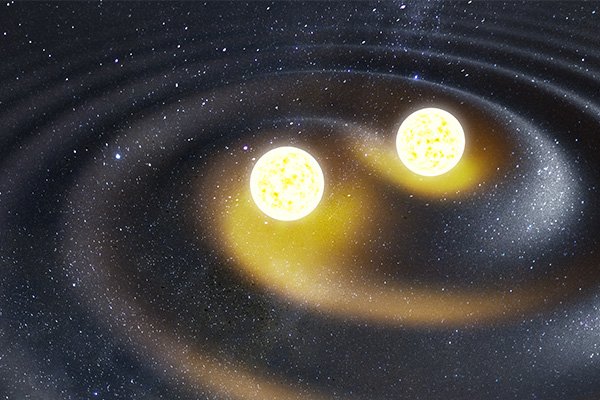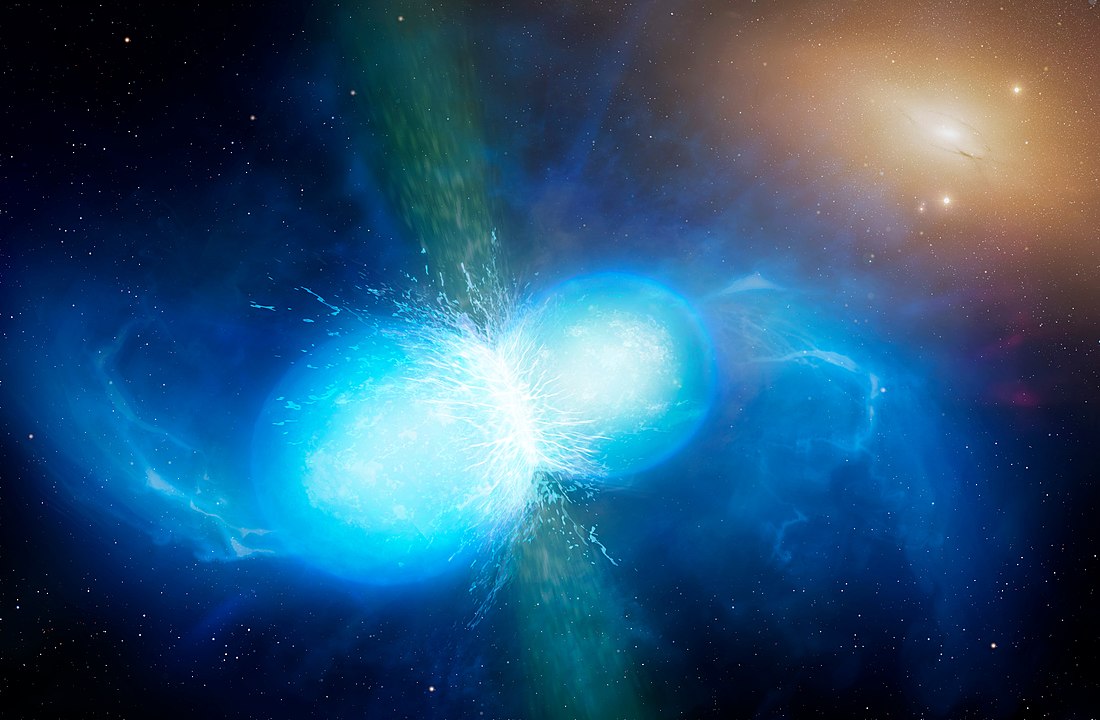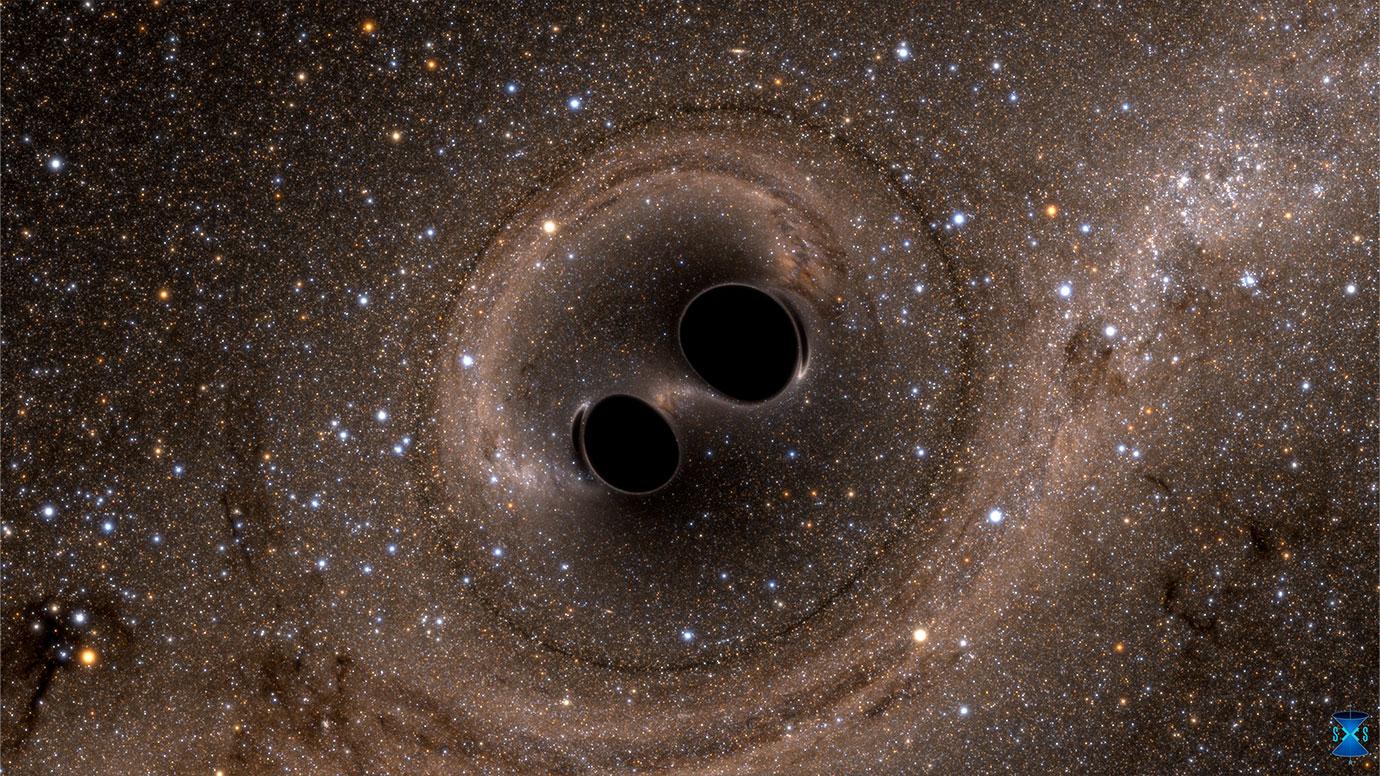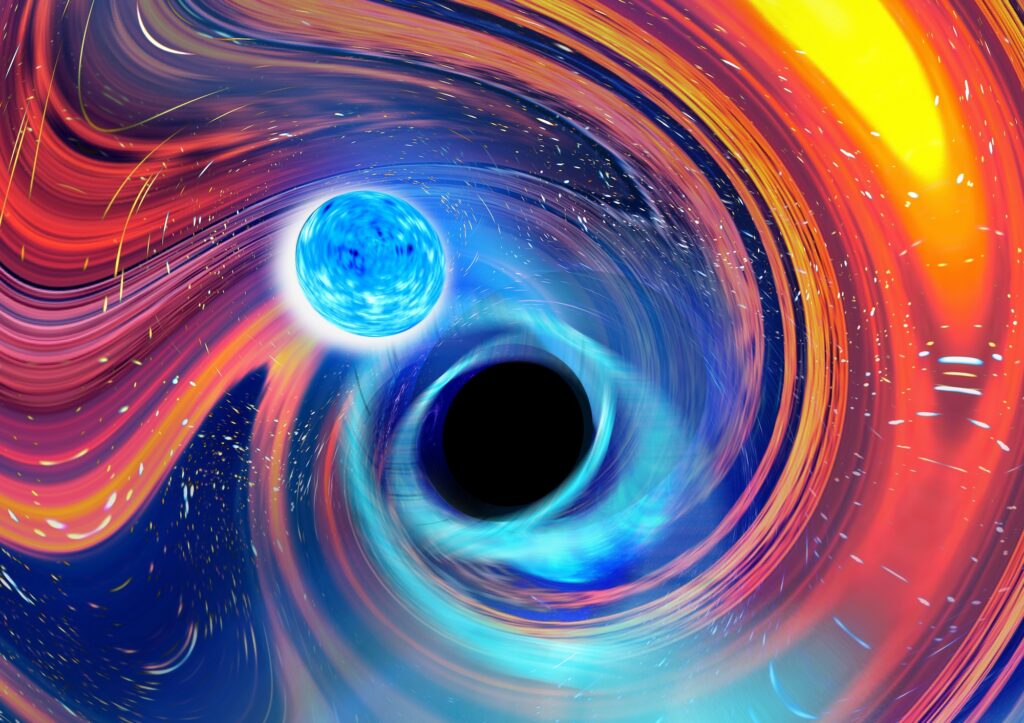The traditional theory of black hole formation seems to struggle to explain how black holes can merge into larger more massive black holes yet they have been seen with LIGO. It’s possible that they may have formed at the beginning of time and if so, then they may be a worthy candidate to explain dark matter but only if there are enough of them. A team of researchers recently searched for microlensing events from black holes in the Large Magellanic Cloud but didn’t find enough to account for more than a fraction of dark matter.
Continue reading “LIGO Has Detected Unusual Black Holes Merging, But they Probably Don’t Explain Dark Matter”Future Gravitational Wave Observatories Could See the Earliest Black Hole Mergers in the Universe
In February 2016, scientists at the Laser Interferometer Gravitational-wave Observatory (LIGO) confirmed they made the first-ever detection of gravitational waves (GWs). These events occur when massive objects like neutron stars and black holes merge, sending ripples through spacetime that can be detected millions (and even billions) of light-years away. Since the first event, more than 100 GW events have been confirmed by LIGO, the Advanced VIRGO collaboration, and the Kamioka Gravitational Wave Detector (KAGRA).
Moreover, scientists have found numerous applications for GW astronomy, from probing the interiors of supernovae and neutron stars to measuring the expansion rate of the Universe and learning what it looked like one minute after the Big Bang. In a recent study, an international team of astronomers proposed another application for binary black hole (BBH) mergers: using the earliest mergers in the Universe to probe the first generation of stars (Population III) in the Universe. By modeling how the events evolved, they determined what kind of GW signals the proposed Einstein Telescope (ET) could observe in the coming years.
Continue reading “Future Gravitational Wave Observatories Could See the Earliest Black Hole Mergers in the Universe”If Gravitons Exist, this Experiment Might Find Them

There are four fundamental forces in the Universe; strong, weak, electromagnetic and gravity. Quantum theory explains three of the four through the interaction of particles but science has yet to discover a corresponding particle for gravity. Known as the ‘graviton’, the hypothetical gravity particle is thought to constitute gravitational waves but it hasn’t been detected in gravity wave detector. A new experiment hopes to change that using an acoustic resonator to identify individual gravitons and confirm their existence.
Continue reading “If Gravitons Exist, this Experiment Might Find Them”For Their Next Trick, Gravitational Wave Observatories Could Detect Collapsing Stars

The merging of black holes and neutron stars are among the most energetic events in the universe. Not only do they emit colossal amounts of energy, they can also be detected through gravitational waves. Observatories like LIGO/Virgo (Laser Interferometer Gravitational Wave Observatory) and KAGRA (The Kamioka Gravitational Wave Detector) have detected their gravitational waves but new gravitational wave observatories are now thought to be able to detect the collapse of a massive rapidly spinning star before it becomes a black hole. According to new research, collapsing stars within 50 million light years should be detectable.
Continue reading “For Their Next Trick, Gravitational Wave Observatories Could Detect Collapsing Stars”Scientists Develop a Novel Method for Detecting Supermassive Black Holes: Use Smaller Black Holes!
In 1974, astronomers Bruce Balick and Robert L. Brown discovered a powerful radio source at the center of the Milky Way galaxy. The source, Sagittarius A*, was subsequently revealed to be a supermassive black hole (SMBH) with a mass of over 4 million Suns. Since then, astronomers have determined that SMBHs reside at the center of all galaxies with highly active central regions known as active galactic nuclei (AGNs) or “quasars.” Despite all we’ve learned, the origin of these massive black holes remains one of the biggest mysteries in astronomy.
The most popular theories are that they may have formed when the Universe was still very young or have grown over time by consuming the matter around them (accretion) and through mergers with other black holes. In recent years, research has shown that when mergers between such massive objects occur, Gravitational Waves (GWs) are released. In a recent study, an international team of astrophysicists proposed a novel method for detecting pairs of SMBHs: analyzing gravitational waves generated by binaries of nearby small stellar black holes.
Continue reading “Scientists Develop a Novel Method for Detecting Supermassive Black Holes: Use Smaller Black Holes!”More Evidence for the Gravitational Wave Background of the Universe
The gravitational wave background was first detected in 2016. It was announced following the release of the first data set from the European Pulsar Timing Array. A second set of data has just been released and, joined by the Indian Pulsar Timing Array, both studies confirm the existence of the background. The latest theory seems to suggest that we’re seeing the combined signal of supermassive black hole mergers.
Continue reading “More Evidence for the Gravitational Wave Background of the Universe”Gravitational Lenses Could Pin Down Black Hole Mergers with Unprecedented Accuracy
Gravitational wave astronomy has been one of the hottest new types of astronomy ever since the LIGO consortium officially detected the first gravitational wave (GW) back in 2016. Astronomers were excited about the number of new questions that could be answered using this sensing technique that had never been considered before. But a lot of the nuance of the GWs that LIGO and other detectors have found in the 90 gravitational wave candidates they have found since 2016 is lost.
Researchers have a hard time determining which galaxy a gravitational wave comes from. But now, a new paper from researchers in the Netherlands has a strategy and developed some simulations that could help narrow down the search for the birthplace of GWs. To do so, they use another darling of astronomers everywhere—gravitational lensing.
Continue reading “Gravitational Lenses Could Pin Down Black Hole Mergers with Unprecedented Accuracy”Astronomers Will Get Gravitational Wave Alerts Within 30 Seconds

Any event in the cosmos generates gravitational waves, the bigger the event, the more disturbance. Events where black holes and neutron stars collide can send out waves detectable here on Earth. It is possible that there can be an event in visible light when neutron stars collide so to take advantage of every opportunity an early warning is essential. The teams at LIGO-Virgo-KAGRA observatories are working on an alert system that will alert astronomers within 30 seconds fo a gravity wave event. If warning is early enough it may be possible to identify the source and watch the after glow.
Continue reading “Astronomers Will Get Gravitational Wave Alerts Within 30 Seconds”A Neutron Star Merged with a Surprisingly Light Black Hole
Galactic collisions, meteor impacts and even stellar mergers are not uncommon events. neutron stars colliding with black holes however are a little more rare, in fact, until now, we have never observed one. The fourth LIGO-Virgo-KAGRA observing detected gravitational waves from a collision between a black hole and neutron star 650 million light years away. The black hole was tiny though with a mass between 2.5 to 4.5 times that of the Sun.
Continue reading “A Neutron Star Merged with a Surprisingly Light Black Hole”Colliding Neutron Stars are the Ultimate Particle Accelerators

Gamma-ray telescopes observing neutron star collisions might be the key to identifying the composition of dark matter. One leading theory explaining dark matter it that is mostly made from hypothetical particles called axions. If an axion is created within the intensely energetic environment of two neutron stars merging, it should then decay into gamma-ray photons which we could see using space telescopes like Fermi-LAT.
Continue reading “Colliding Neutron Stars are the Ultimate Particle Accelerators”




